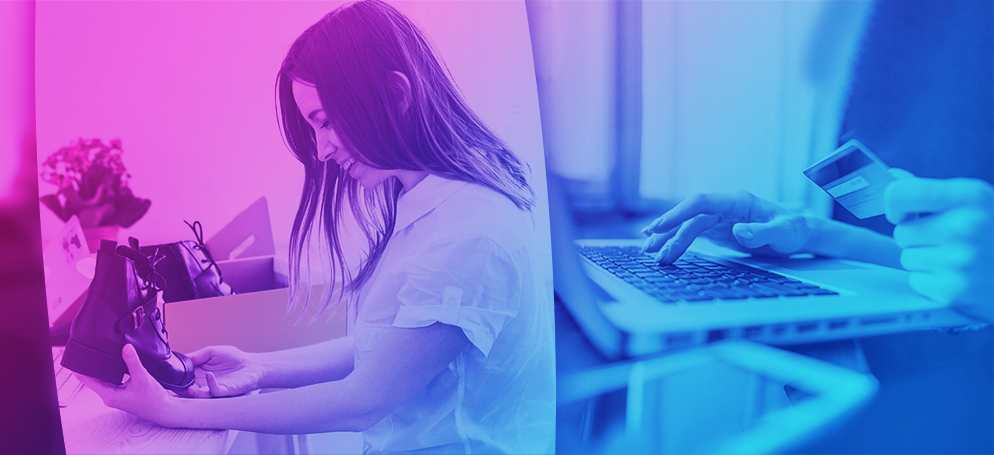
The rise of Buy Now, Pay Later around the world
According to a 2020 report by Worldpay, Buy Now, Pay Later (BNPL) is expected to be the fastest-growing online payment method in the world over the next five years. But what is it, why is it so popular, and what is the international opportunity?
What is Buy Now, Pay Later?
Buy Now, Pay Later allows shoppers to make an online purchase, but instead of paying in full at the time of purchase, they can pay it off over time in instalments. Whilst this isn’t dramatically different to buying with a credit card, two psychological factors explain the appeal of BNPL:
1) Present bias – the tendency to place greater value on goods or income achieved in the present, rather than the same goods or income in the future. Given the choice between a pay-off today or a pay-off in the future, most consumers choose the former.
2) Loss aversion – the tendency to prefer avoiding losses to acquiring equivalent gains. E-commerce businesses are adept at playing on this fear of missing out – for example, through deadlines for offers and discounts, or messages such as “only 2 items left in stock” or “3 other customers are also browsing this item” and so on.
Globally, BNPL is a booming market set to grow from $7.3 billion in 2019 to $33.6 billion in 2027. This increase is fuelled by fintechs offering payment platforms and partnering with leading e-commerce retailers.
How does Buy Now, Pay Later work?
With BNPL, customers enter a contract which obligates them to make payments of both principal and interest (where applicable) in the future, like a traditional loan.
For example, a company may offer a BNPL option through a third party, like PayPal Credit. When a customer chooses this option, they are agreeing to purchase a product without paying upfront but rather over time. The company still receives the proceeds of the sale upfront from PayPal, making this scenario like a credit card payment from a business perspective.
The burden of chasing the money owed as part of the “pay later” aspect of the transaction falls to the BNPL provider in the same way a credit card company would be responsible for receiving money from users with standard credit card payments.
Most BNPL providers perform some credit checks before issuing money, but this is not universal. Some BNPL solutions offer one consistent interest rate, while others base interest rates on factors like purchase price. Many – including market leader Klarna – charge no interest or late fees. The specifics vary by brand.
Who is the typical Buy Now, Pay Later customer?
As with any payment method, the customer profile varies from market to market, which is why you should always use a Local In-Market Expert to help you navigate consumer preferences in your target markets.
Generally, BNPL has been stereotyped as a solution for people who live pay cheque to pay cheque – yet research suggests the picture is more nuanced. One UK study found that that, in the UK:
• BNPL appeals to consumers who are, in fact, credit averse – which is why they prefer BNPL to a traditional credit card.
• Nearly 30% of BNPL customers were above the UK national average income.
• Contrary to BNPL’s youthful image, the biggest users are in fact 35-44 year olds (Gen Y and X), followed by the over-65s (Boomers).
• A key motivator for BNPL is the flexibility to manage finances, regardless of income level.
• Currently, BNPL purchases tend to be clustered around cheaper retail items but there is growing appetite to buy expensive items using this method.
These insights are UK-specific and will vary by market – but they show that the stereotype of BNPL is not necessarily the full picture.
Benefits of Buy Now, Pay Later for retailers
Retailers like BNPL because it can:
• Increase average order value.
• Help to shift slow-moving inventory.
• Help to reduce cart abandonment. On average, around two thirds of shopping carts are abandoned. Stores which provide BNPL options at checkout see a large drop in cart abandonment rates.
• Increase conversion rate. One survey found that 48% of customersfelt BNPL availability influenced their purchasing decisions, whilst 31% said they would not have made a purchase at all without the ability to pay later.
Buy Now, Pay Later around the world
We’ve chosen to spotlight three regions – South East Asia, Europe and the Middle East – to get a sense of the international opportunity for BNPL.
BNPL in South East Asia
Traditionally, debt has been frowned upon in Asia, where older generations tend to believe you should pay for everything you buy in full. That viewpoint is changing amongst younger people. South East Asia is forecast to be a big growth area for BNPL, driven by:
• Changing cultural attitudes to debt and payment methods
• The proportion of the population who is underbanked. According to Bain & Company, in 2019 more than 70% of adults in South East Asia (roughly 450 million people) were either underbanked (i.e. no access to credit cards or long-term saving products) or unbanked (i.e. no access to a bank account). BNPL reduces this barrier by making it easier to apply for instalment plans without the need for a credit card.
• The significant growth of e-commerce. Forty million new users joined South East Asia’s digital economy in 2020 alone, bringing the total number of internet users in the region to 400 million.
Key BNPL players in South East Asia include:
Hoolah, which currently operates in Singapore, Malaysia and Hong Kong, and is planning to expand into other Asian markets. In October 2020, the company said that transaction volume had increased sevenfold over the past six months as e-commerce boomed.
Atome, which launched in December 2019 and now partners with over 2,000 online and offline retailers across verticals. Atome allows customers to split their purchases into three equal payments over time with zero interest, hidden charges or annual fees.
Rely, which enables customers to buy what they want and split the purchase amount into interest-free payments.
In December 2020, Mastercard announced a collaboration with Pine Labs (one of Asia’s leading commerce platforms) to launch a BNPL product in India, Malaysia, Thailand, the Philippines – and eventually in Vietnam, Singapore and Indonesia.
BNPL in Europe
The BNPL market leader in Europe is Klarna. Founded in Sweden in 2005, the company has become the highest valued fintech in Europe, with a valuation of over $10 billion in November 2020.
Originally associated with fast fashion, the brand has since moved into bigger ticket categories and now has over 10 million users in the UK alone. Each lending decision is made by an automated algorithm, and the customer offer is based around three key products:
• Pay Later – deferred payment in 30 days
• Pay Later in 3 – instalments splitting cost over three payments
• Klarna Finance – payment plans between 6 and 36 months
There is also the Klarna card which is currently only available in Sweden or Germany. Similar to Pinterest, the Klarna app allows users to ‘pin’ prospective purchases and create wish lists with direct links to brands which offer its BNPL service.
Other key BNPL brands in Europe include Laybuy, ClearPay and PayPal Credit.
The sector is facing the prospect of increased regulation in Europe. In February 2021, the UK Government announced new regulations, following campaigning by activists and a review by the Financial Conduct Authority (FCA) which acknowledged that for some, BNPL was “a really easy way to fall into problem debt”.
European consumer rights groups would like to see all BNPL products fall within the EU’s Consumer Credit Directive, the rules of which are currently under review by the European Commission. If that happens, BNPL brands would be obliged to mention specific information at different stages of the creditor-consumer relationship across all their financial services — including during advertising campaigns.
BNPL in the Middle East
The Gulf Co-operation Council (GCC) is an interesting market, not least because each country is different in terms of its infrastructure and digital adoption. (Read Oban’s blog on Arabic culture to understand more.)
For example, consider the United Arab Emirates (UAE) and the Kingdom of Saudi Arabia (KSA), two of the largest markets in the region and direct neighbours:
• The UAE has high credit card penetration and easy, frictionless digital transactions.
• The KSA has low credit adoption, with most transactions carried out in cash.
In general, cash on delivery (COD) remains prevalent for e-commerce across the Middle East, which can lead to a high returns rate and impact cash flow. Across the GCC, regulations are being passed to digitise transactions and weed out cash to build a more digitised, transparent and high trust society.
According to reports, the average share of GCC households that have bought goods online reached 8% in 2020. Given the range in other markets around the world sits at 16 to 25%, there is significant room for growth.
BNPL is gaining in popularity, especially post-Covid, when personal finances are fragile because of the global economic outlook and merchants are looking to capitalise on the surge in online shopping as people avoid going out.
Notable BNPL brands in the Middle East include:
Tabby, which launched in 2019 and is based in the UAE. Tabby enables businesses to offer shoppers delayed payment options without the need for any bank transactions or credit card.
Spotii, which also launched in 2019 and is based in the UAE. The start-up partners with online merchants, allowing them to offer 4 cost-free instalments to the customers on their purchases.
Postpay, backed by US venture capital and again based in the UAE. Postpay requires customers to pay one instalment up front, which reduces return rates.
With its relatively young population, high smartphone penetration rate between 40 and 50%, and government impetus to digitise the economy, the Middle East has huge potential for fintech services including BNPL in the years ahead.
. . .
Oban can help
Buy Now, Pay Later is here to stay, not least because it appeals to mobile-first consumers who appreciate simplicity and convenience. For retailers, BNPL offers another tool to incentivise customers. For developing economies, it offers potential financial inclusion for underbanked and unbanked consumers.
Understanding the payment landscape in your target market is key to conversion. Using a Local In-Market Expert can help you navigate consumer preferences in your chosen markets. To find out how, please get in touch.

Chloë McKenna | Director of New Business
Oban International is the digital marketing agency specialising in international expansion. Our LIME (Local In-Market Expert) Network provides up to date cultural input and insights from over 80 markets around the world, helping clients realise the best marketing opportunities and avoid the costliest mistakes.